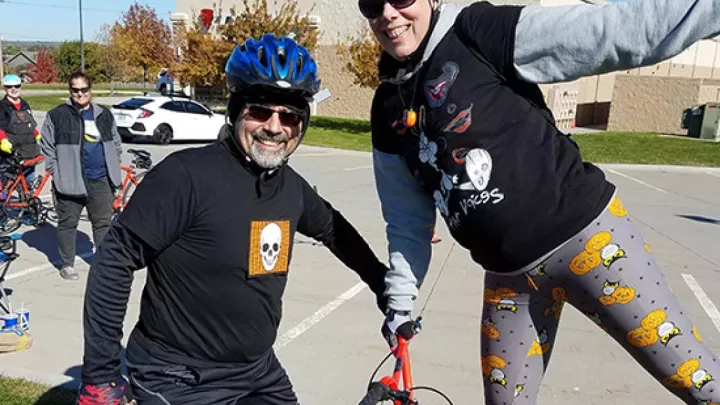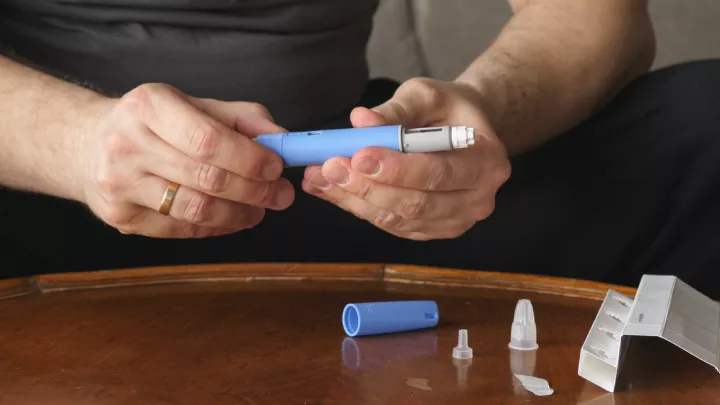Knee arthritis surgery: Is replacement or osteotomy right for you?

Arthritis is a medical condition in which you lose your cartilage – the smooth, cushioned surface covering the joints in your body. The most common form of arthritis is osteoarthritis, which occurs when the cartilage completely wears away to the point where a joint is ‘bone on bone.’ Osteoarthritis is so widespread that the Centers for Disease Control estimates it affects over 32.5 million American adults, and the knee is the most commonly affected joint.
“Pain is the most common issue for patients with arthritis,” says orthopedic surgeon Matthew Tao, MD. “Often, there’s increased pain with activity, although some people can have pain and stiffness at rest as well. Joint swelling and mechanical symptoms like crunching, grinding and locking may also occur.”
“We typically start by treating arthritis conservatively,” says Dr. Tao. “There’s good evidence for anti-inflammatory medications, physical therapy, weight loss, bracing and injections to control pain and improve function. Still, when it gets to the point where we’ve exhausted those nonoperative measures, there are several surgical options.”
What is an osteotomy?
The most common knee surgery for arthritis is a joint replacement, which can be either a partial or total knee replacement. These surgeries have a long track record of excellent results. However, for some patients, an osteotomy can be a good option for treating arthritis.
“An osteotomy is a great alternative if you only have arthritis in part of your knee and are active and/or are looking to avoid a joint replacement for the time being,” says Dr. Tao. During an osteotomy, your surgeon will make a cut to a bone around the knee – either the femur or tibia – to normalize the knee’s alignment and hold it in place with a plate and screws.
“So, if you’re either knock-kneed or bow-legged, an osteotomy will straighten your leg to a more normal position. In doing so, this procedure will take pressure off the arthritic area and allows the force across your knee to be more well-balanced.”
How an osteotomy can help
An osteotomy aims to reduce pain, improve function and allow you to get back to whatever activities you desire. Once the bone heals, there are no restrictions on activity level. “This lack of long-term restrictions may make an osteotomy a more desirable option than a joint replacement for certain patients – particularly if you’re a runner, do heavy weight lifting or high-intensity interval training, also known as HIIT,” says Dr. Tao.
Recovery from an osteotomy during the first one to two months involves protecting the knee with a brace and limited weight bearing. After that period, you can resume normal daily activities as you steadily increase your activity under the guidance of a physical therapist. The total time it takes for the bone to heal varies based on the size and type of osteotomy, but the typical timeline is four to six months. Once the bone heals, you can begin higher-level loading with plyometrics and running before increasing back to full activity.
Ultimately, how you treat your arthritis – including undergoing an osteotomy – is a personal decision. “I tell patients that knee replacement is, without question, the most definitive surgery for arthritis and the right choice for many people,” says Dr. Tao. “But some folks are looking for an alternative, and in that case, an osteotomy may be an option worth considering – especially for those who simply don’t want to give up activities like running or HIIT training.”
However, an osteotomy is not a ‘forever’ surgery – meaning the arthritis is still present. Eventually, you’ll likely need a knee replacement. “The goal, if you undergo an osteotomy, is to keep you healthy and active for 10 or more years before getting that replacement,” says Dr. Tao.
Choosing a treatment for arthritis
“In the end, osteotomy surgery isn’t for everyone, and knee replacements are still the most definitive option,” says Dr. Tao. “But if you’re considering an osteotomy, it’s important to know that it isn’t a scarier or harder surgery than a knee replacement. Both are significant surgeries that carry some risk and should be approached thoughtfully.” While using a brace and crutches for a few weeks is inconvenient and involves some lifestyle planning, the long-term benefit to osteotomy patients is substantial.
“My goal is to give patients a realistic assessment of their situation and lay out the options,” says Dr. Tao. “This choice is very patient-specific, and I never want to talk anyone into surgery. But when it comes to surgery for arthritis, we have some great tools at our disposal. I would encourage prospective patients to explore, keep an open mind and consider what choice works best for them and their desired lifestyle.”







